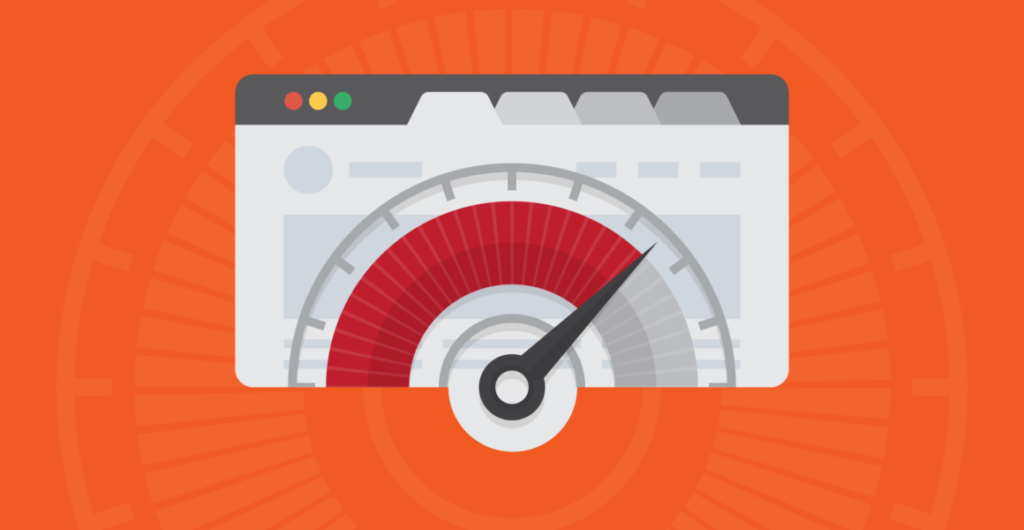Are you happy with your SEO performance? If not, don’t worry – there’s always room for improvement! In this article, we’ll show you how to evaluate and improve your SEO performance.
We’ll cover topics like keyword research, on-page optimization, link building, and more. By the end of this article, you’ll have a better understanding of how to improve your SEO performance. Let’s get started!
Are you happy with your website’s organic search performance? If not, it may be time to take a closer look at your SEO efforts. In this post, we’ll share some tips on how to evaluate and improve your SEO performance.
1. Evaluate Your Current Search Rankings
The first step is to take a close look at where your website currently ranks for important keywords. Use a tool like Google Analytics to track organic traffic over time and see if there are any patterns or trends.
Alternatively, you can use a keyword rank tracking tool like Moz or SEMrush to get more detailed data on where you rank for specific keywords.
2. Analyze Your Competitors’ Search Rankings
Once you know where you stand, it’s time to take a look at your competitors’ rankings.
This will give you an idea of what it will take to outrank them in the SERPs. Use the same tools that you used to check your own rankings and see where they rank for the same keywords that you’re targeting.
3. Conduct an SEO Audit
If you’re not happy with your current ranking position, it’s time for an SEO audit. This process involves taking a close look at all aspects of your website’s SEO, from the technical details (like site structure and redirects) to content optimization (like title tags and meta descriptions). You can either do this yourself or hire an experienced SEO professional to help you out.
Either way, make sure all bases are covered so that nothing is holding back your site’s potential in the search engines.
How do you evaluate your SEO campaign?
How Do You Evaluate Seo Performance?
There’s no one answer to this question since there are multiple ways to evaluate SEO performance. However, some common methods include looking at organic traffic levels, keyword rankings, conversion rates and backlink profiles.
Organic traffic levels can give you an idea of how well your site is performing in the search engines.
If you see a steady increase in organic traffic over time, that means your SEO efforts are likely paying off. You can also look at specific keywords and track their ranking positions over time. Seeing your keywords move up in the search results is another sign that your SEO is working.
Conversion rates are another important metric to look at when evaluating SEO performance. If you’re getting more traffic from the search engines but not seeing a corresponding increase in conversions, that means something isn’t working right and you need to adjust your strategy.
Finally, take a look at your backlink profile from time to time.
A healthy backlink profile should have links from a variety of different sites, and those links should be growing over time. If you’re not seeing any new links being built or if most of your links are coming from low-quality sites, that’s a sign that your SEO could be improved.
What Should You Track to Improve Your Seo Performance?
There are a lot of things you can track to improve your SEO performance. Here are some of the most important factors:
1. Keyword Rankings – You should track where your keywords are ranking in the search engines.
This will give you an idea of how well your SEO efforts are paying off.
2. Traffic Levels – Track the amount of traffic that is coming to your website from the search engines. This will give you an idea of how many people are finding your site and whether or not they are taking action on it.
3. Conversion Rates – If you have goals set up on your website, such as newsletter signups or product purchases, track the conversion rates for these goals. This will give you an idea of how effective your SEO is in driving conversions.
What are the 3 Types of Seo Optimizations?
There are three types of SEO optimizations: on-page, off-page, and technical.
On-Page SEO Optimization
On-page SEO is the practice of optimizing a website for search engines with the goal of earning higher web traffic levels and improving the visibility of the site.
The main focus of on-page optimization is creating content that is both relevant to the keywords you are targeting and interesting enough to encourage users to stay on your site. In addition to great content, on-page optimization also requires a well-structured website with a clean codebase and fast loading speeds. All of these factors help improve your search engine ranking and click-through rate (CTR).
Off-Page SEO Optimization
Off-page SEO focuses on optimizing your website for external signals that can impact your search engine ranking. These signals include things like social media engagement, backlinks from other websites, and brand mentions across the web.
The goal of off-page optimization is to make your site more attractive to search engines so that they will give you a higher ranking in their results pages.
Technical SEO Optimization
Technical SEO encompasses all of the behind-the scenes work that goes into making a website easy for search engines to crawl and index.
This includes everything from ensuring your site’s code is clean and free of errors to setting up 301 redirects when pages are moved or deleted. Technical optimization also extends to your server configuration and architecture; if your servers are slow or not configured properly, it can negatively impact your ranking in search results.
What are the 4 Important Stages in Seo?
SEO, or search engine optimization, is the process of optimizing a website for Google search with the goal of earning higher web traffic levels and improving the visibility of the site.
There are four important stages in SEO:
1. On-Page SEO: This stage focuses on optimizing individual webpages in order to make them more visible and relevant to Google’s search algorithm.
This includes things like choosing the right keywords, using proper tag structure, and creating compelling content.
2. Technical SEO: In this stage, we focus on improving the technical aspects of a website that can impact its ranking in Google search results. This might include tasks like fixing broken links, increasing website speed, or implementing schema markup.
3. Local SEO: Local SEO is all about optimizing a website for users who are searching for businesses in their specific geographic area. This includes things like claiming your business listing on directories like Yelp and Google My Business, as well as working to earn positive reviews from customers.
4. Off-Page SEO: Finally, off-page SEO refers to any optimization efforts that take place outside of your own website.

Credit: blog.hubspot.com
How to Measure Seo Success
Are you looking for ways to measure your SEO success? If so, then you’re in the right place. In this blog post, we’ll share with you some of the most important metrics that you should track to gauge your SEO progress.
1. Website traffic
One of the first and most obvious things to track is website traffic. This metric will give you an idea of how many people are visiting your site as a result of your SEO efforts.
You can track website traffic using Google Analytics or another similar tool.
2. Rankings
Another key metric to track is your rankings in the search engines.
This will give you an idea of how well your site is doing in terms of visibility and organic search traffic. You can track your rankings using a tool like Moz or Ahrefs .
3. Search engine referrals
In addition to tracking overall website traffic, it’s also important to track referrals from specific search engines. This data will give you an idea of which search engines are sending the most traffic your way and whether or not your SEO efforts are paying off in those particular channels. You can track referral data in Google Analytics under the “Acquisition” tab .
4. Leads and sales
If you’re running an ecommerce site or generating leads for a business, then it’s important to track how many sales or leads are coming in as a result of your SEO efforts. This metric will give you a direct indication of whether or not your SEO strategy is working from a revenue perspective.
You can track leads and sales data in Google Analytics under the “Conversions” tab .
5. Social media engagement
Finally, another key metric to keep an eye on is social media engagement . This includes things like likes, shares, comments, and other forms of interaction on social media platforms like Facebook , Twitter , and Instagram .
Seo Measurement Tools
There are a number of different SEO measurement tools available on the market today. However, not all of them are created equal. In order to find the best tool for your needs, it is important to understand what each tool measures and how it can be used to improve your SEO strategy.
The first thing to consider when choosing an SEO measurement tool is what type of data you need to collect. Some tools focus on measuring traffic from organic search results, while others track both organic and paid traffic. If you only want to track one or the other, then make sure the tool you choose has that capability.
Another important consideration is whether the tool tracks data at the keyword level or at the website level. Keyword-level data can be very useful for identifying which keywords are driving traffic to your site and which ones aren’t. However, website-level data is necessary if you want to see how your overall traffic levels are trending over time.
Once you know what kind of data you need, you can start narrowing down your choices of measurement tools. There are a variety of free and paid options available, so decide which features are most important to you and look for a tool that fits your budget.
No matter which SEO measurement tool you ultimately choose, make sure you use it regularly in order to track your progress and keep improving your SEO strategy over time!
What is Seo Performance
SEO Performance is a process that enables a website to rank higher in search engine results pages (SERPs). The main aim of SEO is to improve the visibility of a website so that it may attract more visitors from organic or unpaid search results.
There are many factors involved in SEO performance, including on-page optimization (such as title tags, meta descriptions, and keyword density) and off-page optimization (such as link building and social media engagement).
A successful SEO campaign will take all of these factors into account in order to achieve the best possible results.
On-page optimization is perhaps the most important factor in SEO performance. This refers to any changes that can be made directly to the website itself in order to improve its ranking.
Title tags, meta descriptions, and keyword density are all important elements of on-page optimization.
Title tags are the text that appears in the search engine results page (SERP) when your website comes up as a result. They should be concise and descriptive, containing your target keywords for that particular page.
Meta descriptions are similar to title tags, but they provide more information about the page’s content. Again, they should be concise and contain relevant keywords. Keyword density is a measure of how often your target keywords appear on a given page; too much or too little keyword stuffing can hurt your ranking.
Off-page optimization refers to any activity that takes place outside of your website that can impact your ranking positively or negatively. Link building is one of the most important aspects of off-page optimization; links from high-quality websites tell search engines that your site is also high quality and worth displaying prominently in SERPs. Social media engagement is another important factor; sharing links to your content on social media sites such as Twitter and Facebook helps increase its reach and potential for being seen by interested users.
How to Track Seo Results
As a business owner, you know that SEO is important to the success of your website. But what good is investing time and money into SEO if you can’t track the results? Luckily, there are a number of ways to track your SEO progress.
Here are a few tips on how to track SEO results:
1. Use Google Analytics. This free tool from Google lets you track all kinds of data about your website traffic, including where your visitors are coming from, what they’re looking at on your site, and how long they’re staying.
This information can be invaluable in helping you assess the effectiveness of your SEO efforts.
2. Check your rankings in search engines. Another way to track your SEO progress is to periodically check your website’s ranking in popular search engines like Google and Bing.
You can use tools like Moz’s Rank Tracker or SERPS’ Rank Checker to do this easily and quickly.
3. Monitor your social media metrics. If you’re active on social media (and you should be!), make sure to monitor key metrics like follows, likes, shares, and comments.
These metrics can give you insight into whether or not people are engaging with your content – which is an important part of successful SEO strategy.
4 . Keep an eye on your backlink profile .
Inbound links (links from other websites back to yours) are an important ranking factor for search engines . So it’s crucial that you keep tabs on who’s linking to you – and whether those links are helping or hurting your SEO efforts . You can use tools like Majestic or ahrefs Backlink Checker to see who’s linking to you , as well as the quality of those links .
5 Review Your Webmaster Tools Account Regularly Finally , don’t forget about reviewing your webmaster tools account regularly ! Google Search Console (formerly known as Google Webmaster Tools) provides valuable insights into how Google sees your website – including information about any errors that may have been found , sitemap data , keyword rankings , and more .
Seo Efforts
As a business owner, you know that appearing in the top search engine results is essential for driving traffic to your website. After all, people are more likely to click on a link that appears on the first page of results than one that’s buried on the fifth page or lower. That’s why you’ve put so much effort into optimizing your site for search engines.
But what exactly does it mean to “optimize” a website? And how can you ensure that your optimization efforts are paying off?
Let’s start with a definition: Search engine optimization (SEO) is the process of improving the visibility and ranking of a website or web page in search engine results pages (SERPs).
In other words, it’s about making your site more visible and accessible to potential customers who are using search engines like Google, Bing, and Yahoo.
There are two main types of SEO: on-page SEO and off-page SEO. On-page SEO refers to all of the steps you can take to make your website more visible and attractive to search engines.
This includes things like choosing the right keywords and phrases to target, creating compelling content, and optimizing your website’s code and structure. Off-page SEO, on the other hand, refers to actions taken outside of your website (but still within your control) that can improve its visibility and ranking. This includes things like building links from high-quality websites and creating social media buzz around your brand.
Both on-page and off-page SEO are important for achieving good rankings in SERPs. But which one should you focus on first? The answer may surprise you: neither!
The most effective approach is to focus equally on both types of SEO from the very beginning. By doing so, you’ll give yourself the best chance of success in achieving those all-important top spots in SERPs.
How to Measure Seo in Google Analytics
Google Analytics is a powerful tool for measuring SEO performance, but it can be tricky to know where to start. This blog post will show you how to measure your SEO progress using Google Analytics, so you can make sure your efforts are paying off.
There are two main ways to measure SEO in Google Analytics: organic traffic and conversion rate.
Organic traffic is the number of visitors who come to your site from search engines, such as Google, Bing, and Yahoo. Conversion rate is the percentage of visitors who take a desired action on your site, such as signing up for a newsletter or making a purchase.
To see how well your SEO efforts are working, go to Acquisition > All Traffic > Channels in Google Analytics.
Here you will see a breakdown of your website’s traffic by channel. The “Organic Search” channel includes all traffic from search engines, both paid and organic. Look at the “Conversions” column to see how many people who came from search engines took a desired action on your site.
You can also use Google Analytics to track specific keywords and see how they perform over time. To do this, go to Acquisition > Campaigns > Keywords in Google Analytics. Enter the keyword or phrase you want to track in the “Search Term” field and click “Apply.”
You’ll then see data on how that keyword performs over time, including impressions (how often it was seen), clicks (how often people clicked on it), and conversions (how often people took a desired action after clicking on it).
By tracking both organic traffic and conversion rate, you can get a good idea of whether your SEO efforts are paying off. If you’re not seeing the results you want, consider tweaking your approach until you start seeing improvements.
Seo Performance Analysis
SEO performance analysis is the process of measuring and evaluating the results of your SEO campaigns. This includes tracking your organic traffic, keyword rankings, and conversion rate. By analyzing your SEO performance, you can identify what’s working and what isn’t, and make necessary changes to improve your results.
There are a number of tools that can be used for SEO performance analysis. Google Analytics is a popular choice, as it provides detailed insights into your website traffic. Other options include Moz Pro’s Rank Tracker and SERPWoo’s Rank Tracker.
When analyzing your SEO performance, there are a few key metrics to keep an eye on. First, track your organic traffic levels over time to see if there is any growth or decline. Next, check your keyword rankings to see how they’ve changed since you began your SEO efforts.
Finally, measure your conversion rate to see how many visitors are taking the desired action on your site (such as making a purchase).
By keeping an eye on these key metrics, you can get a good idea of whether or not your SEO campaign is successful. If you’re not seeing the results you want, don’t be afraid to make changes – sometimes even small tweaks can make a big difference in your overall performance!
Seo Metrics
There are a lot of different metrics involved in SEO, and it can be tough to keep track of all of them. Here is a quick rundown of some of the most important SEO metrics:
1. Traffic: This is perhaps the most obvious metric, but it’s still important to track.
After all, if your SEO efforts aren’t resulting in more traffic, then they aren’t really doing their job.
2. Rankings: Another key metric to track is your rankings in the search engines. If you’re not moving up in the rankings, then you’re not going to get more traffic.
3. Click-Through Rate: Once people see your listing in the search results, you need to make sure they actually click on it. This metric measures how often people who see your listing end up clicking through to your site.
4. Conversion Rate: Finally, once people are on your site, you need to make sure they take action that you want them to take (such as making a purchase or signing up for a newsletter).
This metric measures how often visitors take the desired action on your site.
Conclusion
If you’re not happy with your website’s SEO performance, there are a number of things you can do to improve it. First, take a look at your site’s structure and content. Are all of your pages properly linked together?
Do you have enough keyword-rich content on each page?
Next, check your site’s code. Make sure all of your titles and metatags are correct and that your site is using proper header tags.
Also, take a look at your website’s loading speed. If it’s slow, that could be harming your ranking in search engines.
Finally, keep an eye on your competition.
See what they’re doing right and try to emulate their success. With a little effort, you should be able to improve your website’s SEO performance and start getting more traffic from search engines.



